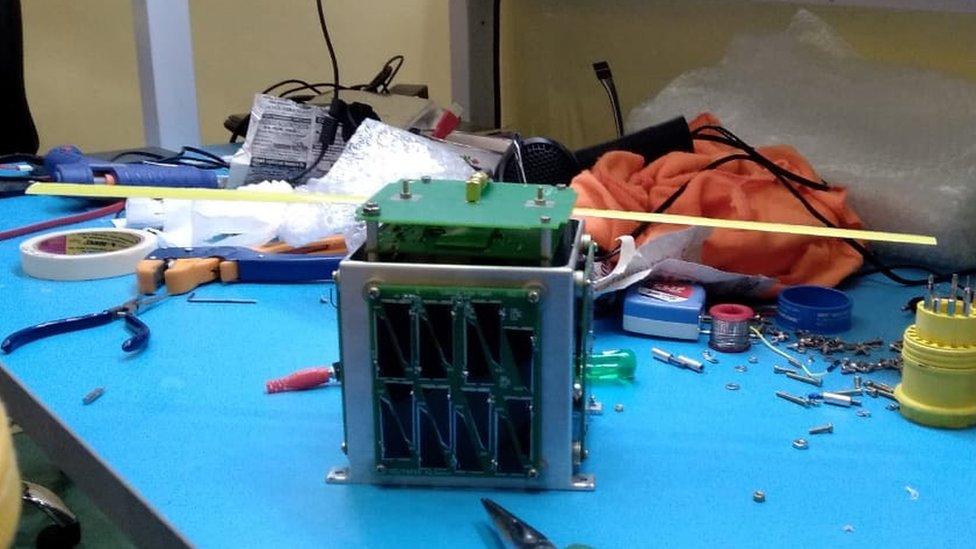Chandrayaan-2: India spacecraft begins orbiting Moon
- Published
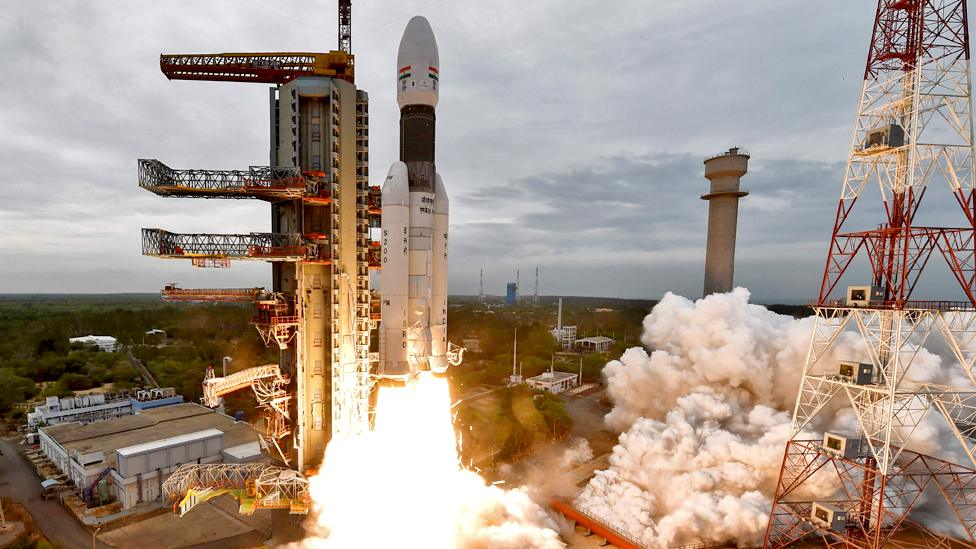
The rocket weighs as much as a fully-loaded jumbo jet
India's second lunar exploration mission has entered the Moon's orbit, nearly a month after blasting off, officials have said.
Chandrayaan-2 began its orbit of the Moon at 09:02 local time (04:32 GMT) on Tuesday.
The craft completed the manoeuvre in around 30 minutes, the Indian Space Research Organisation (Isro) said.
India's Prime Minister Narendra Modi hailed the mission as "an important step in the landmark journey", external.
K Sivan, head of Isro, said he was confident Chandrayaan-2 would land on the Moon as planned on 7 September.
"Whatever is humanly possible, has been done by us," he told reporters at a news conference.
Allow X content?
This article contains content provided by X. We ask for your permission before anything is loaded, as they may be using cookies and other technologies. You may want to read X’s cookie policy, external and privacy policy, external before accepting. To view this content choose ‘accept and continue’.

Chandrayaan-2 was launched from the Sriharikota space station on 22 July, a week after the scheduled blast-off was halted due to a technical snag.
India hopes the $145m (£116m) mission will be the first to land on the Moon's south pole. Last month's launch was the beginning of a 384,000km (239,000-mile) journey.
'Our hearts almost stopped'
Mr Sivan said Chandrayaan-2's successful entry into the Moon's orbit was a make-or-break moment for the mission.
The craft, which comprises three parts - an orbiter, a lander and a rover - used an on-board propulsion system to complete the tricky operation.
Allow X content?
This article contains content provided by X. We ask for your permission before anything is loaded, as they may be using cookies and other technologies. You may want to read X’s cookie policy, external and privacy policy, external before accepting. To view this content choose ‘accept and continue’.

Mr Sivan said the speed and altitude of the craft had to be "just right" because "even a small error would have killed the mission".
"Our heartbeats increased... for 30 minutes, our hearts almost stopped," Mr Sivan said.
Now Chandrayaan-2 has entered the Moon's orbit, it will carry out a series of manoeuvres in the coming days before its lander attempts to touch down next month.
What is this mission all about?
India's first Moon mission - Chandrayaan-1, which launched in 2008 - resulted in the probe crash-landing, external on the lunar surface. But it carried out the first and most detailed search for water on the Moon using radars.
Chandrayaan-2 (Moon vehicle 2) will try to land near the little-explored south pole of the Moon.
The mission will focus on the lunar surface, searching for water and minerals and measuring moonquakes, among other things.
India used its most powerful rocket, the Geosynchronous Satellite Launch Vehicle Mark III (GSLV Mk-III), in this mission. It weighed 640 tonnes (almost 1.5 times the weight of a fully-loaded 747 jumbo jet) and, at 44 metres (144ft), was as high as a 14-storey building.
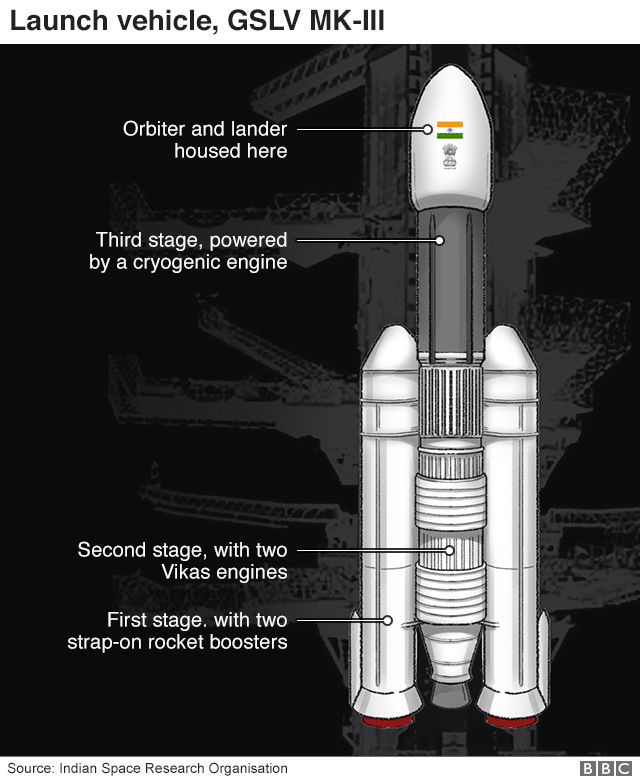

The spacecraft used in the mission has three distinct parts: an orbiter, a lander and a rover.
The orbiter, which weighs 2,379kg (5,244lb) and has a mission life of a year, will take images of the lunar surface.
The lander (named Vikram, after the founder of Isro) weighs about half as much, and carries within its belly a 27kg Moon rover with instruments to analyse the lunar soil. In its 14-day life, the rover (called Pragyan - wisdom in Sanskrit) can travel up to a half a kilometre from the lander and will send data and images back to Earth for analysis.
Is India a space superpower?
How long is the journey to the Moon?
The journey of more than six weeks is a lot longer than the four days the Apollo 11 mission 50 years ago took to land humans on the lunar surface for the first time.
In order to save fuel, India's space agency has chosen a circuitous route to take advantage of the Earth's gravity, which will help slingshot the satellite towards the Moon. India does not have a rocket powerful enough to hurl Chandrayaan-2 on a direct path. In comparison, the Saturn V rocket used by the Apollo programme remains the largest and most powerful rocket ever built.


- Published22 July 2019
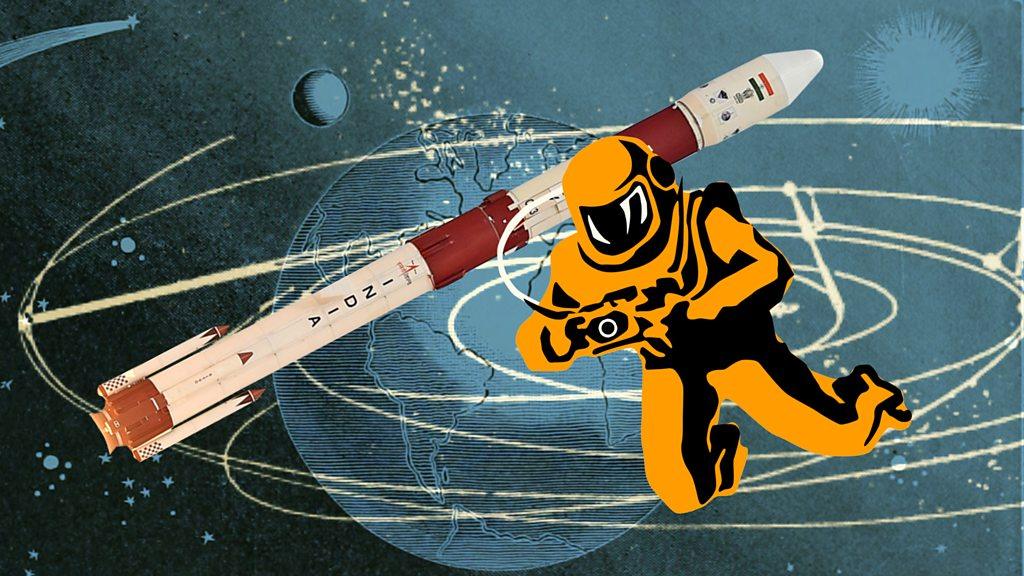
- Published12 December 2016
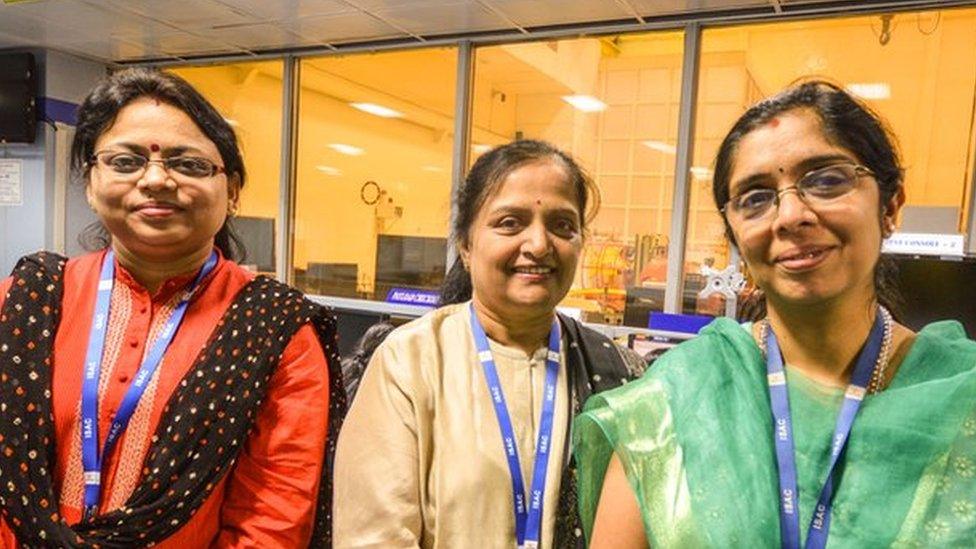
- Published25 January 2019
